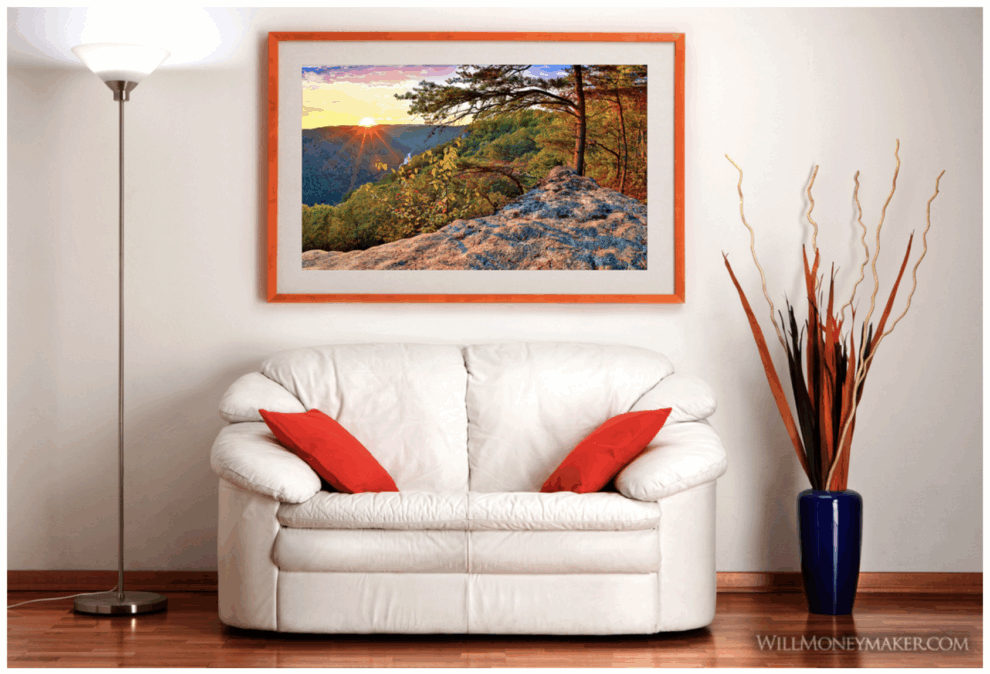For so many photographers, the dream is to see their work hanging in galleries. To become a renowned artist, living by creativity, making a living wage, however large or small, on the photographs that they produce. Even those of us who are satisfied with other types of photography have harbored this dream, even if only briefly, or only as a daydream and not as a serious venture.
It can be done. Fine art photography is marketable, and plenty of artists do make a living from their art. However, many more photographers don’t make that living. Quite frankly, it is extraordinarily difficult to make a living on art and art alone. But, it is a great dream, and if you work hard, and make wise decisions, then it is perfectly doable. Let’s talk about how to make a living through photography, whether through fine artwork or other ventures.
Where to Market Fine Art Photography
The first thing that many photographers think about when they think about selling fine art photography is a gallery. You can go directly to galleries and try to make a sale or get representation. Depending on the gallery, your work may hang for weeks or months before it sells and you get paid. Other galleries may buy the work directly from you to resell.
However, the issue with gallery sales is simply that demand is low. Art is not one of those things that is deemed absolutely necessary by society. People are too busy paying bills, putting food on the table and so forth, so they simply don’t have much extra money left to spend on art. Consequently, galleries tend to only choose art that they know a collector might be interested in, and because of that, not only are opportunities rare, but you’ll often be limited to certain postmodern genres of photography. It is incredibly difficult to get gallery representation, particularly at a high-end gallery that would be able to sell your art for enough money that your commissions are large enough and frequent enough to make a living.
Of course, there are other ways to sell fine art photography. However, they come with their own challenges. Many photographers try to sell photography online, through places like Etsy or SmugMug. The markets here prove challenging for a variety of reasons. Again, the demand is low, which means there aren’t that many sales to go around, to begin with. And, without a gallery owner approving or denying pieces of artwork based on quality, style and subject material, there are hundreds of thousands of prints up for sale, which lowers your chances of a sale even further.
There are places like Etsy often develop their own sort of style. One photographer might make lots of sales on a particular type of photograph and then before too long, other photographers start copying that style in order to get sales, too. Just as with galleries, you’ll find that online, there are limits to the styles of photography that is bought and sold.
Finally, there are places like art or craft fairs, or local restaurants and coffee shops that are willing to display your work. These can be a great alternative to a gallery or online sales, but there are challenges here, as well — particularly if you live in an area with few coffee shops or craft fairs. In coffee shops and restaurants, the challenge is simply that people aren’t always expecting that the art on the walls is for sale, but you can avoid this challenge simply by making price tags clearly visible. Still, people don’t expect to buy art as they eat lunch, so chances of a sale are fairly low. Art and craft shows require you to invest a lot in printing, framing and booth space but they don’t give you a guarantee that you will recoup that investment.
Is There Another Way?
These difficulties are why so many up and coming photographers end up doing something other than pursuing fine art photography. On its face, the fine art business looks hopeful, and there is a multitude of websites out there that will give you guidelines and make it sound easy — like anyone can sell artistic photos and make a living.
The reality is quite different. You’ll face lots of hard work, photographing, marketing and so forth. At the end of the day, if you are serious about fine art photography, then there is another way, one that determined photographers use to pay their bills and chase their dreams at the same time.
That option is to turn your photography into a business. There is no shortage of demand for photography in retail and commercial markets. You can become a wedding photographer or a portraitist for families or graduation photos. There is event photography, product photography and real estate photography. Public places like hospitals and office buildings are always looking for commercially produced art by local artists that they can use to brighten their halls, as are places like hotels. You can even become a photojournalist.
Choose one of these avenues, and hang on to that dream of fine art photography. What better way is there to do it? By pursuing a practical retail or commercial path, you’ll still have the opportunity to hone your skills and produce artistic images for people, families or businesses. What’s more, you’ll have the equipment and the spare time in evenings or on days off to pursue your dream. If you so desire, your spare time can be devoted to producing the art that you love, and to market it to galleries.
Of course, this path is not an easy path. Nothing in photography ever is. But, it is a valid and respectable way to earn your living and immerse yourself in your art. In fact, if I had to hazard a guess, I would think that most career photographers aren’t in the fine art field, at least not full time. Instead, they are the people that are out documenting news, making sales images or creating family keepsakes.





